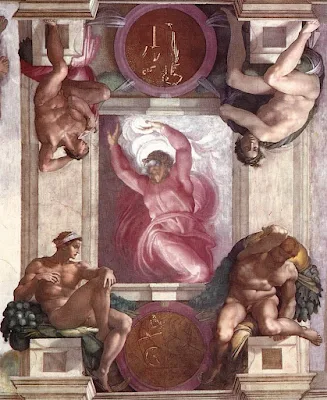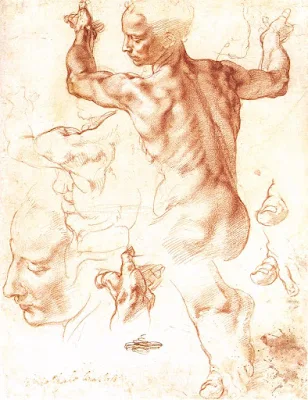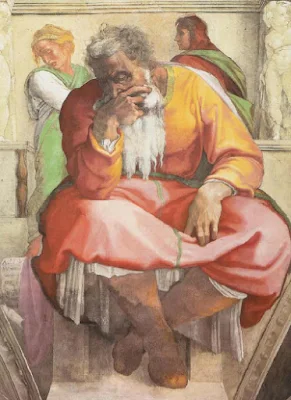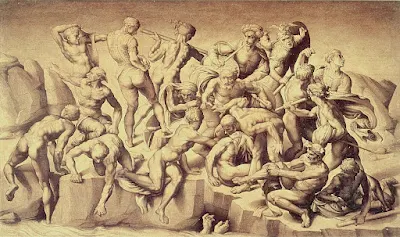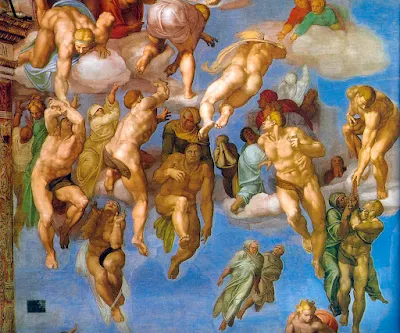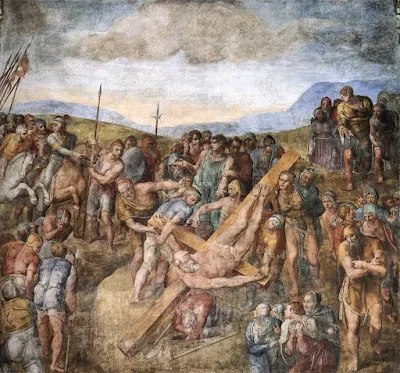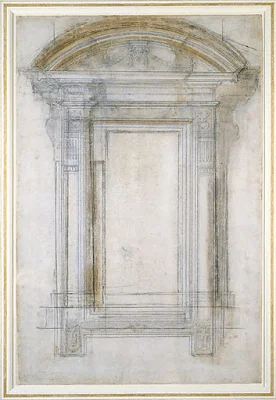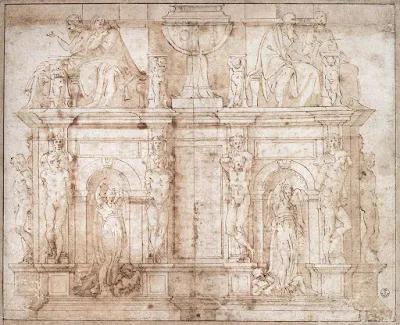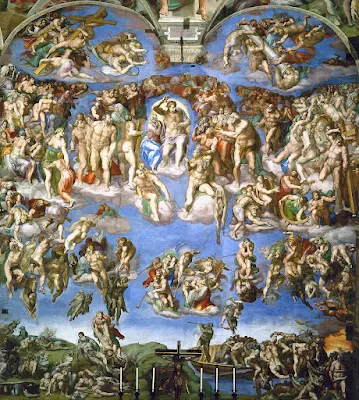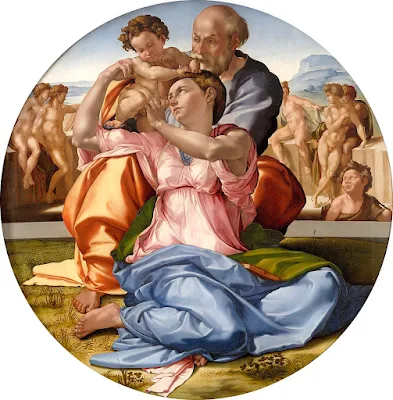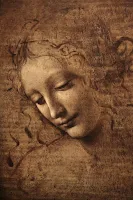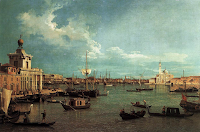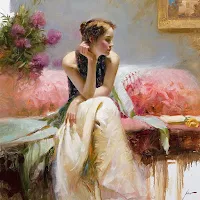Michelangelo: Master of the Renaissance
In the annals of art history, few names shine as brightly as that of Michelangelo Buonarroti, the Italian artist whose genius transcended his era and continues to captivate audiences worldwide.
From his breath-taking sculptures to his awe-inspiring frescoes, Michelangelo's legacy remains an enduring testament to the power of human creativity and imagination.
A Titan of Artistry
Michelangelo, often referred to simply as "Il Divino" (the divine one), stands as one of the most influential figures of the Italian Renaissance. His masterpieces, characterized by their technical brilliance and emotional depth, have left an indelible mark on the world of art.

Early Life and Influences
Born on March 6, 1475, in Caprese near Arezzo, Tuscany, Michelangelo showed early promise in the arts. Raised in Florence, a city teeming with cultural fervor, he was exposed to the works of Giotto, Donatello, and Masaccio, whose innovations would shape his artistic vision.
The Formative Years
Despite initial opposition from his family, Michelangelo's talent was undeniable. At the age of 13, he became an apprentice to the painter Domenico Ghirlandaio, where he honed his skills in drawing and composition. This early training laid the foundation for his future brilliance.
Education and Mentorship
Michelangelo's thirst for knowledge led him to the prestigious Medici Academy, where he studied under the guidance of influential scholars and artists. It was here that he developed his fascination with anatomy, a passion that would inform his sculptural masterpieces.
The Renaissance Aesthetic
At the heart of Michelangelo's work lies a profound reverence for classical beauty and symmetry. His sculptures, such as the iconic "David" and the hauntingly beautiful "Pieta," exemplify his mastery of form and his ability to breathe life into marble.
A Brush with Greatness
In addition to his sculptural prowess, Michelangelo was also a gifted painter. His ceiling frescoes in the Sistine Chapel, including the iconic "Creation of Adam," are celebrated as some of the greatest achievements in Western art, showcasing his unparalleled skill and creativity.
Patronage and Recognition
Throughout his illustrious career, Michelangelo garnered the patronage of powerful figures such as Pope Julius II and the de' Medici family. His reputation as a visionary artist spread far and wide, earning him widespread acclaim and ensuring his place in history.
Legacy and Influence
Michelangelo's impact on the world of art cannot be overstated. His revolutionary approach to form, composition, and expression paved the way for future generations of artists, leaving an enduring legacy that continues to inspire to this day.
Beyond the Studio
Despite his fame, Michelangelo remained a deeply introspective and private individual. His personal writings reveal a man grappling with existential questions and the pursuit of artistic perfection, adding a layer of complexity to his public persona.
The Eternal Genius
Despite his fame, Michelangelo remained a deeply introspective and private individual. His personal writings reveal a man grappling with existential questions and the pursuit of artistic perfection, adding a layer of complexity to his public persona.

Michelangelo's Masterpieces
A Showcase of Timeless 18 Artworks
Frequently Asked Questions
☛ What is Michelangelo best known for?
Michelangelo is best known for his masterful sculptures, including the iconic "David" and the exquisite "Pieta," as well as his awe-inspiring frescoes in the Sistine Chapel.
☛ Where was Michelangelo born?
Michelangelo was born on March 6, 1475, in Caprese near Arezzo, Tuscany, Italy.
☛ What was Michelangelo's artistic style?
Michelangelo's artistic style is characterized by a profound reverence for classical beauty and symmetry, as well as a mastery of form, composition, and expression.
☛ What are some of Michelangelo's most famous works?
Some of Michelangelo's most famous works include the sculptures "David" and "Pieta," as well as the ceiling frescoes in the Sistine Chapel, including the iconic "Creation of Adam."
☛ Who were some of Michelangelo's patrons?
Michelangelo received patronage from powerful figures such as Pope Julius II and the de' Medici family, who recognized his genius and supported his artistic endeavours.
☛ What was Michelangelo's impact on future generations of artists?
Michelangelo's revolutionary approach to artistry paved the way for future generations of artists, influencing styles and techniques for centuries to come.
☛ Did Michelangelo have any notable collaborations?
While Michelangelo often worked independently, he collaborated with other artists and architects on various projects, including the design of St. Peter's Basilica in Rome.
☛ How did Michelangelo balance his personal and professional life?
Despite his fame and success, Michelangelo remained a deeply introspective and private individual, grappling with existential questions and the pursuit of artistic perfection.
☛ What is Michelangelo's legacy?
Michelangelo's legacy is one of unparalleled artistic brilliance and innovation, inspiring generations of artists and leaving an indelible mark on the world of art.
☛ What can we learn from Michelangelo's life and work?
Michelangelo's life and work teach us the transformative power of creativity and the enduring impact of artistic expression, reminding us of the boundless potential of the human spirit.
Conclusion
Michelangelo's life was a testament to the power of creativity and the enduring impact of artistic innovation. From his humble beginnings in Tuscany to his ascent as one of the preeminent artists of the Renaissance, his journey is a testament to the transformative power of art to inspire, provoke, and enlighten. As we marvel at his masterpieces, we are reminded of the immortal words of the artist himself: "I saw the angel in the marble and carved until I set him free."
Explore more Italian Artist
Courtesy, Credits and Thanks
Explore more about Artist Michelangelo
en.wikipedia.org: Explore Michelangelo's life, art, and legacy in this comprehensive encyclopedia entry.
www.michelangelo.org: Immerse yourself in the world of Michelangelo with a curated collection of his artworks and insights into his creative genius.

